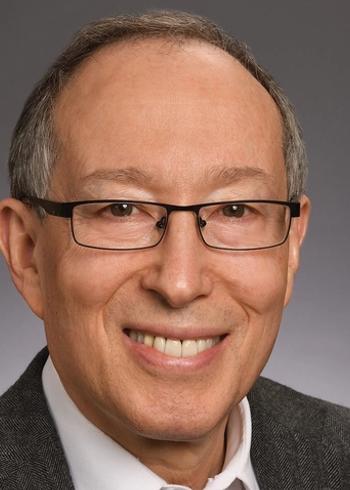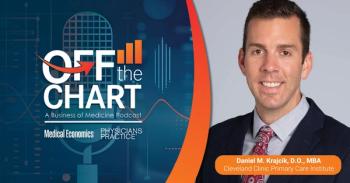
Primary care has lost its quarterback position in patient care
There is a crisis in primary care and it’s now flowing over into the hospital when a primary care physician’s (PCP) patient is admitted.
Editor's Note:
No longer cared for by the PCP, the role has largely fallen to
Popular online: How the Docs vs. Glocks ruling affects physicians
PCPs have seen their overhead costs rise dramatically along with insurer-mandated paperwork and government-mandated electronic health record (EHR) time requirements. This means the PCP must see more and more patients for shorter and shorter periods to cover overhead and still reserve time for the nonclinical requirements. The average visit time is now 15 minutes with only 8 to 10 minutes of face time. It also means that most-but definitely not all-PCPs no longer attend their patients in the hospital, leaving that function to the hospitalist.
Hospitalists are trained in caring for patients in the hospital. Since that is all they do, they become very experienced in dealing with the types of medical issues that require hospitalization. Working full-time in the hospital means that they know how to get things done in that setting and do so fairly efficiently.
The growth of the
Early studies suggest that quality was improved and costs reduced with the advent of hospitalist care. This was especially true for complicated patients who required multiple physician visits and interactions each day, something difficult for the community-based physician to achieve. With the need to see multiple patients each day in the office to cover overhead, many PCPs willingly ceded hospital care to the hospitalist.
In our experience, hospitalists are a heterogeneous group, many are just out of an internal medicine residency; some are working part-time because of childcare obligations. Many are contemplating a fellowship, but want to catch up on loan obligations. Some hospitalists anticipate at a future point to become PCPs. Still others intend to make a career as a fulltime hospitalist.
More from Dr. Schimpff: W
Frequently employed by the hospital, they still must meet productivity standards in order to earn their salary. Often this means caring for a large number of patients, most of them quite ill. Although they are expert in what they do, they do not have the years of interaction with the patient that the PCP has. They did not know the patient before the hospital event and are not likely to know him or her after. Each patient is an individual with his or her unique family, social, economic, and of course, medical background.
The patient today may have multiple chronic illnesses such as diabetes, congestive heart failure or chronic lung disease and is admitted to the hospital with a new problem or an exacerbation of an old one. The hospitalist can deal well with the reason for admission.
Nevertheless, they will not be cognizant of the fine balance of personality and medication that has otherwise maintained the patient as independent in the community. It also is unlikely that they know what diagnoses have been done prior to the admission.
In recent back-to-back articles in the New England Journal of Medicine,
Our observations of routine hospitalist care is that a given patient may have multiple hospitalists over the course of the admission, rather than one doctor who knows the patients well. During a four-day stay, a patient may easily be cared for by three different hospitalists. Test redundancy and unneeded consultations are all too common.
Further reading:
There is also a tendency to ask for consultations from subspecialists when more time with the patient might have been sufficient to establish the issue at hand. Relatively easy procedures are also handed off to a specialist, e.g., joint effusion-call the orthopedist to do the arthrocentesis. Mildly demented patients all too often get a repeat head scan because of an inadequate handoff that the patient has already had a more-than-adequate evaluation for reversible causes of dementia.
Typically, a hospitalist service is made up of many physicians that have a minimum of three years of internal medicine training. We have observed that in many community hospitals, the average experience after residency is likely less than five years. So if an unusual problem arises, the hospitalist calls for a consult. There typically are multidisciplinary rounds, but the admitting hospitalist may not be the rounding physician.
More discouraging is the finding that hospitalists often tend to place the primary care doctor’s patients on the wrong medication, and very often there is inadequate communication between the hospitalist and the primary care physician to review details at the time of admission. This, of course, can lead to a more extensive hospital stay and confusion for the patient.
To compound the problem, the handoff back to the PCP at discharge is often problematic with inadequate communication between them. The PCP may not even know that the patient was admitted or discharged until the patient calls for a new appointment. Meanwhile, the fine balance of those chronic illnesses may be out of kilter so that, not surprisingly, about 20% of older individuals end up back in the hospital with an unplanned admission within the following month.
Related:
The PCP was always the backbone of American medicine. He or she not only cared for patients in the office, but also collaborated with the emergency room physician and attended to hospitalized patients, seeking specialist consultation as needed. Today, only a few PCPs even visit their hospitalized patients, relying entirely on the hospitalist and the emergency medicine physician.
Hospitals are scary places. You never really want to be admitted, but sometimes it is necessary, and indeed, even lifesaving. This is the time when you most want a knowledgeable professional friend of long standing, one with whom you have deep-seated trust.
Although most PCPs do not visit their patients in the hospital today, some do and they are committed to giving the patient the expert care the patient requires. But for these physicians, some community hospitals for various reasons have determined that only the hospitalist may have privileges to care for the patient.
That’s right-hospital leaders are discouraging primary care doctors from coming to the hospital, and in many cases have prohibited them from having active admitting privileges.
Somehow, they discount the possibility that the primary care doctor knows the patient best and can work effectively and collaboratively with the hospitalist for the patient’s benefit.
Erroneously, hospitals in many cases believe that primary care doctors diminish quality and increase the length of stay. We have discussed this very issue with a retired board member from a large Maryland insurer and confirmed that a huge uncontrollable expense to the hospital bill is over-consulting with specialists and redundancy of procedures and testing ordered by hospitalists.
The PCP is being marginalized. This is distinctly to the patient’s disadvantage.
Popular online:
Interestingly, insurers are having an impact on control of costs, but not in the hospital. Primary care physicians are now rewarded for guiding patients to the less costly specialist and using visiting nurses to manage co-morbidities that have
We believe the insurers need to understand the value of comprehensive primary care that extends into the hospital; this would translate into even more savings. PCPs need to earn enough with a
We are not intending to disparage hospitalists. They are well trained, committed and productive and overall have added quality to the hospital environment. However, we are advocating for a collaborative process of hospitalist and PCP working together.
Returning the PCP to his or her positon as the quarterback of patient care is good medicine-it means greater quality, a more satisfied patient, less frustrated physicians-yet much lower total costs of care. A win-win-win.
Harry A Oken MD is a primary care physician in private practice who still cares for his patients when hospitalized and is a clinical professor of medicine at the University of Maryland School of Medicine.
Stephen C Schimpff, MD is a quasi-retired internist, professor of medicine and public policy, former CEO of the University of Maryland Medical Center, and is the author of
Newsletter
Stay informed and empowered with Medical Economics enewsletter, delivering expert insights, financial strategies, practice management tips and technology trends — tailored for today’s physicians.















